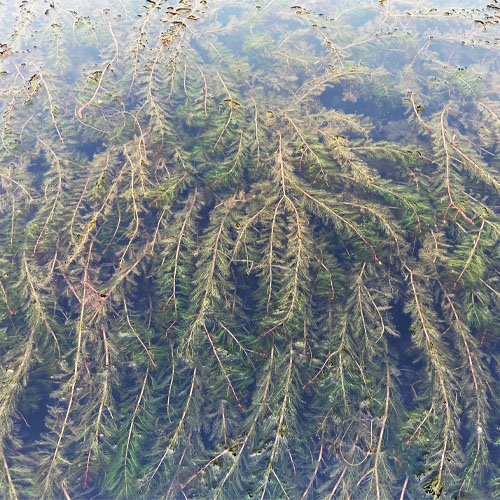Published in the Tahoe Daily Tribune.
For the last 30 years, science showed us that climate change was threatening the planet and our way of life. Despite decades of warnings, the world has not done enough to stop it. We just felt the full force of climate change’s impacts here in Tahoe as the Caldor Fire endangered the lives of firefighters, thousands of homes, and Tahoe’s sensitive ecosystem.
Our recent, tragic experience should serve as a lesson. When scientific evidence warns of environmental disaster, we need to listen and take action to prevent it. Sadly, Lake Tahoe is facing another environmental catastrophe: aquatic invasive weeds.
For nearly a decade, science has shown us that these underwater, non-native plants threaten to destroy Lake Tahoe’s native ecology, pristine water quality and world-famous clarity, and ruin our enjoyment of this mountain paradise. Murky, weed-choked shorelines, neon green water, and toxic algae blooms are not part of the Tahoe we know and love. But even today, that horror story is reality in some parts of the Lake, because of aquatic invasive weeds. Unless we act now, no stretch of Tahoe’s 72-mile shoreline will be safe from that same, grim fate.
For more than eight years, the League to Save Lake Tahoe has been deeply involved in efforts with the Tahoe Keys Property Owners Association (TKPOA), Tahoe Resource Conservation District, Lahontan Water Quality Control Board, and Tahoe Regional Planning Agency to control Tahoe’s aquatic weed problem where it’s most severe: the Tahoe Keys.
Despite millions of dollars already spent by the TKPOA, the tools on hand are not sufficient to treat a problem as big and complex as in the Keys. In fact, what has been done to date has been ineffective and unintentionally made the situation worse. The weed infestation has spread from the Tahoe Keys to the Lake itself. Today, more than 100 acres along the south shore are contaminated, and the infestation continues to spread to other shores.
Experience, science, and ingenuity have presented us an opportunity to save Lake Tahoe from aquatic invasive weeds, and we need to seize it. The Tahoe Keys “Control Methods Test” is a proposal to test a suite of proven technologies from around the world, along with emerging methods and new combinations of these treatments — including ultraviolet light, laminar flow aeration, and a one-time, targeted use of herbicides — to reveal how we can overcome the challenge and protect the Lake. The Control Methods Test is currently moving through a strict environmental and regulatory review process. Crucially, the mix of treatments proposed must not only be effective, they must be safe for the Lake Tahoe environment and everyone who enjoys it.
The League to Save Lake Tahoe strongly supports the proposed Control Methods Test because science clearly shows that aquatic weeds pose a dire threat, the status quo will not solve the problem, and the fate of Lake Tahoe is at stake. To Keep Tahoe Blue, we must move forward with this comprehensive and careful test of any and all methods that could be part of the long-term solution.
The League does not take the use of herbicides in the Lake lightly. We support the Control Methods Test in part because it is exactly that, an exhaustively planned, highly controlled, rigorously monitored, one-time test that can show us how to save Lake Tahoe.
This fact is beyond debate: if we do nothing, or fail to act quickly, the worst fate for Lake Tahoe is unavoidable.
Darcie Goodman Collins, PhD is chief executive officer of the League to Save Lake Tahoe / Keep Tahoe Blue.
For more information, visit TahoeKeysWeeds.org.
Read the story at the Tahoe Daily Tribune.


